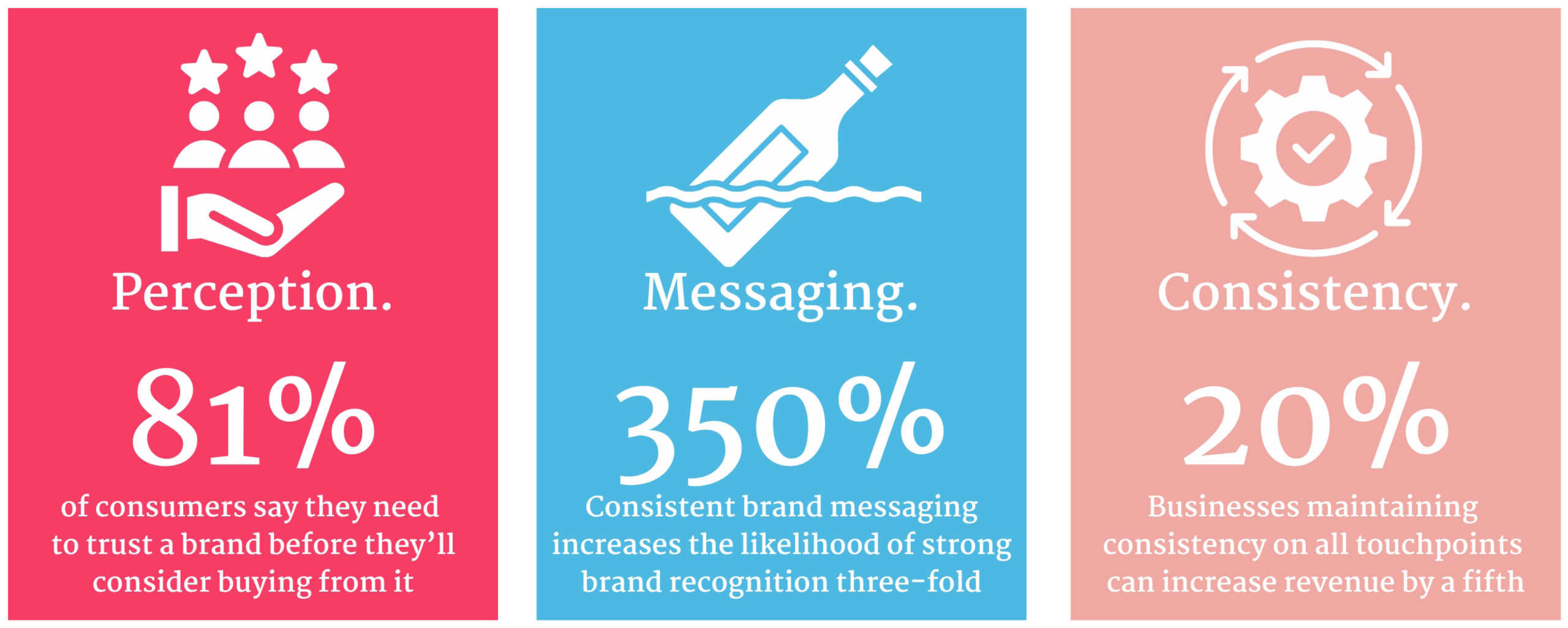Whilst you may feel that it’s better to do something rather than nothing, marketing is most effective when it’s built around your business goals. Whether you’re aiming to grow revenue, expand into a new market, or build a stronger brand presence, your marketing strategy should act as the engine that drives that growth forward. A good marketing strategy will give you a clear plan of what your marketing will look like for the next month, quarter or year, so that your team or creative agency has direction to follow rather than simply shooting from the hip.
It can be difficult and daunting to know where to begin with writing a marketing strategy, especially for a small to medium sized business when resources are already stretched elsewhere, but that’s where we come in; here we show you how to align your marketing strategy with your business growth goals, and how we can help you to manage your marketing going forward.

Step 1: Get clear on your growth goals
Start by defining your business’s growth goals in tangible terms. For example, are you looking to:
- Increase revenue by a certain percentage?
- Attract more of a specific type of client?
- Launch a new service or product?
- Expand into a new market or demographic?
Think SMART goals when setting these terms: Specific, Measurable, Achievable, Relevant, and Time-bound.
It’s also important to be realistic about your goals; for example, expecting tens of thousands of social media followers because you’ve increased posting from two to four times a week isn’t going to happen, yet posting the type of content that will bring an engaged following is a much more realistic goal.
The clearer your goals, the easier it will be to design marketing activities that support them.
Step 2: Audit your current marketing activity
Take a step back and assess what you’re already doing. What platforms are you active on? What kind of content are you creating? Which campaigns have worked, and which haven’t?
This should ideally be data driven, for example looking at how many of your emails have been opened and had click throughs, or looking at social media reach, however it can also include thinking about aspects such as where your time is best spent: for example, do you really need a TikTok account if you’re a B2B brand?
By undertaking this audit, it will help you identify gaps, overlaps or activities that might be costing time or money without delivering real value. Our pro tip: focus on metrics that matter; follower growth is great, but if those followers are not converting into leads or website traffic, it might be time to rethink.
Step 3: Build a strategy that serves the bigger picture
Now it’s time to build a strategy that supports your goals. That means:
- Choosing the right channels: where are your ideal customers spending their time?
- Crafting the right message: what do they need to hear to take action?
- Building your brand awareness: how can you keep your brand visible and relevant in your audience’s world?
- Planning smart campaigns: what stories, offers, or value can you share to move them through your funnel?
Your strategy should serve as a roadmap: not just for what to post, but for how you will drive your message and convert leads.
Step 4: Align teams and timelines
If you have a team, make sure everyone – from content creators to salespeople – is aligned with the overarching growth goals. Clear communication and cross-functional planning go a long way in making marketing feel less like a siloed activity and more like an integrated part of your business.
It’s also much easier to market your business when your team are on board with your brand’s marketing. They are key ambassadors for your brand, and when everyone understands and believes in the message, tone and goals, it creates consistency across all assets. This alignment leads to stronger brand trust, better customer experiences and more effective marketing overall.
And even if you don’t have a team, as a sole trader it’s wise to set timelines and check-ins to make sure your marketing is staying on track with your objectives.
Step 5: Test, measure and refine
Marketing isn’t “set it and forget it.” Monitor what’s working, tweak what’s not and don’t be afraid to pivot if something isn’t delivering the results you need.
Use data to make informed decisions, and don’t forget that if a piece of marketing resonates with your audience it’s wise to think of ways that you can repurpose it to make it work harder for you.
In today’s busy world, we are constantly being bombarded by messages and media from a huge range of sources, and so the average brand needs up to 20 marketing touchpoints before a client will convert. Keeping your brand visible with well thought-out marketing is therefore crucial.
Need help aligning your marketing with your growth?
At Blue Serif we work with brands to build custom marketing strategies that actually work. From brand positioning to campaign planning, as well as the implementation and management of your marketing, we help you connect the dots between your goals and the creative marketing that gets you there.
Want to know more about how we can innovate, create and elevate your marketing to drive business growth? Get in touch with our team of experienced marketeers today!
———
If you found this article helpful, be sure to subscribe to our newsletter – packed with valuable insights and inspiring case studies. And don’t forget to check your junk, spam or ‘other’ folder from time to time as email newsletters can occasionally land there, and you won’t want to miss out! Sign up by clicking here.




